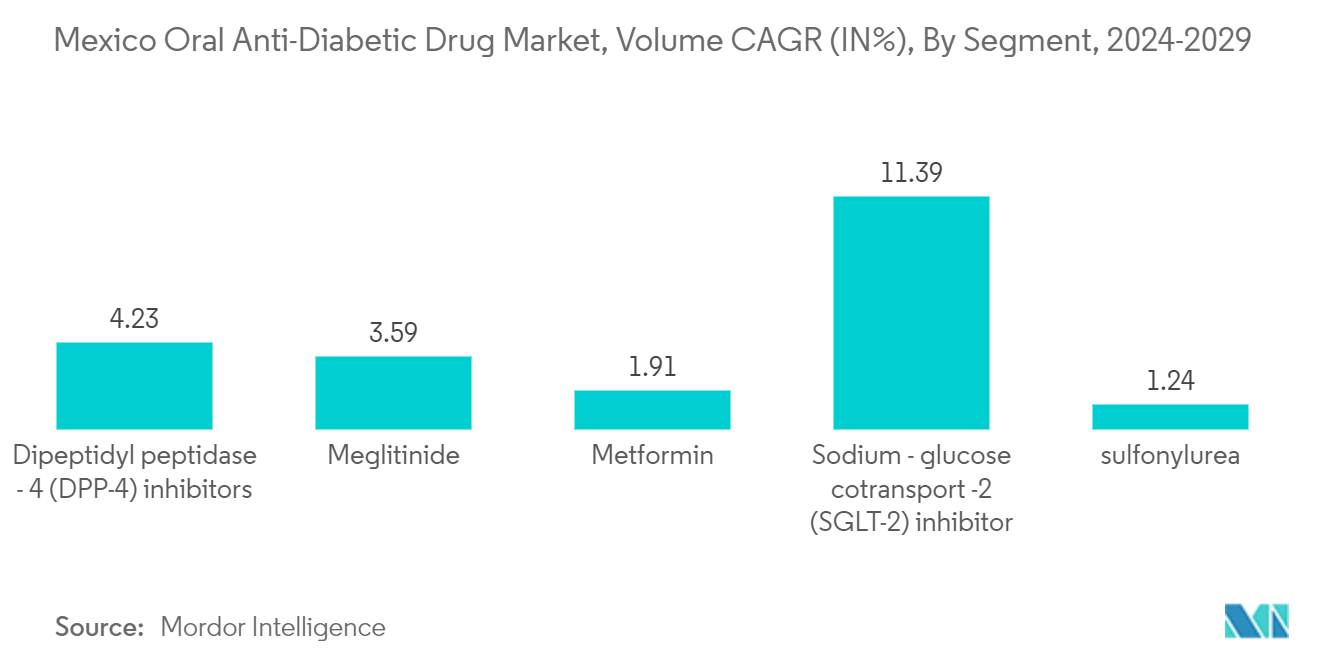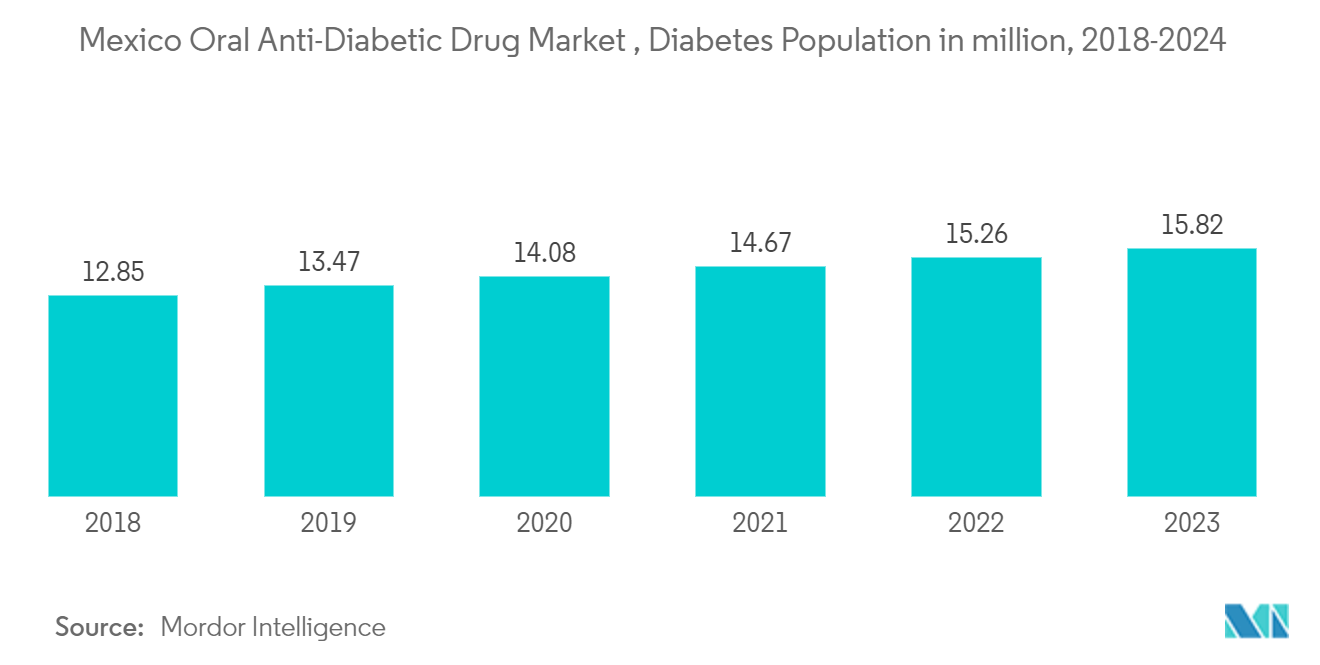Market Trends of Mexico Oral Anti-Diabetic Drug Industry
Sulfonylureas Segment Occupied the Highest Market Share in the Mexico Oral Anti-Diabetic Drugs Market in the current year.
Regarding revenue, the Sulfonylureas segment is anticipated to lead the Mexico Oral Anti-Diabetic Drugs Market and post a CAGR of over 1% during the forecast year.
In Mexico, approximately 25% of patients with type 2 diabetes (T2D) have adequate glycemic control. Polymorphisms in pharmacogenetic genes have been shown to have clinical consequences resulting in drug toxicity or therapeutic inefficacy. The most prevalent kind of adult-onset diabetes is kind 2 Diabetes Mellitus (T2DM).
T2DM is linked to various side effects, including blindness, lower limb amputation, and early mortality. Treatment for Type 2 Diabetes Mellitus (T2DM) essentially entails the use of oral anti-diabetic medications (OADs), such as sulfonylureas (SUs) and biguanides, which inhibit the synthesis of hepatic glucose. There are currently several classes of oral diabetes medications (OADs), most of which work by increasing insulin secretion (sulfonylureas), decreasing hepatic glucose production (biguanides), delaying the breakdown and absorption of intestinal carbohydrates (alpha-glucosidase inhibitors), or enhancing insulin function. (thiazolidinediones). Sulfonylureas (SUs) target an ATP-dependent potassium (K-ATP) channel in pancreatic β-cells.

The increasing Diabetes Population in Mexico is driving the market.
In recent years, diabetes prevalence has alarmingly increased in Mexico. Patients with diabetes must make several adjustments during the day to keep their blood glucose levels within acceptable ranges. Examples include taking oral anti-diabetic medicine or consuming more carbs while monitoring their blood glucose levels. Obesity, a poor diet, and lack of exercise are the primary causes of the rise in newly diagnosed Type 1 and Type 2 diabetes cases. Diabetes medicine consumption is on the rise, as evidenced by the fast-rising incidence, prevalence, and healthcare costs of diabetes individuals.
Oral anti-diabetic medications have been made available globally and are advised for usage when type 2 diabetes therapy needs to be escalated along with lifestyle modification. Due to the wide variety of effectiveness, safety, and modes of action, oral medicines are frequently the first treatments employed in treating type 2 diabetes. Diabetes patients can minimize their complications risk and maintain their illness control using anti-diabetic medications. For the rest of their lives, people with diabetes may need to take anti-diabetic drugs to manage their blood sugar levels and prevent hypo and hyperglycemia.
Oral anti-diabetic medication has higher acceptability than insulin, improving therapy adherence. They also have the advantages of easier control and cheaper cost. People experiencing poverty were denied access to services and were in danger of financial hardship due to a lack of health insurance. Many nations, like Mexico, have implemented community-based, national, and targeted public health insurance to safeguard the populace against exorbitant health costs. There are several health insurance companies in Mexico.
Government employees are covered by the Instituto de Seguridad y Servicios Sociales de los Trabajadores del Estado (ISSSTE; State Employees Social Security and Social Services Institute), while employees in the private sector are covered by the Instituto Mexicano del Seguro Social (IMSS; Mexican Social Security Institute). To shield people of working age from high medical expenditures, the Seguro Popular (People's Insurance) was established.
Enrollment in the Seguro Popular is not based on health or pre-existing conditions, there is no co-payment based on the kind of medical treatment obtained, and family payments are purely based on financial capability. The Mexican government's many measures are anticipated to fuel the market's expansion. To assure affordable medicine pricing, the Mexican government collaborated with various private businesses to use their supply chains (production, distribution, and retailing).


